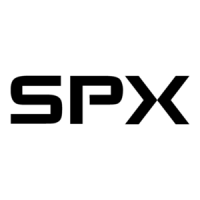
Do you have a question about the SPX Hankison HPRP 3000 and is the answer not in the manual?
| Model | HPRP 3000 |
|---|---|
| Category | Dehumidifier |
| Manufacturer | SPX Hankison |
| Type | Refrigerated |
| Airflow Capacity | 3000 SCFM |
| Airflow | 3000 SCFM |
| Inlet Temperature | Up to 120°F |
| Pressure Dew Point | 35°F (1.7°C) |
| Power Supply | 460V/3Ph/60Hz |
Safety guidelines for operating equipment under pressure, including depressurization.
Mandatory safety practices for electrical connections and servicing.
Guidelines for selecting an optimal installation site and required clearances.
Specifies minimum air-cooled clearances for proper ventilation.
Details for connecting compressed air inlet, outlet, and bypass lines.
Procedures for connecting cooling water inlet and outlet lines.
Steps for connecting the dryer to the electrical power supply.
Explanation of the automatic drain's function and operation.
Defines the limits for inlet pressure, temperature, and ambient conditions.
Step-by-step guide for safely starting the dryer for the first time.
How to navigate the control panel menus and sub-menus.
Identification and explanation of buttons, indicators, and display elements.
Detailed steps for initial startup, including pre-checks and operation.
Essential checks to perform after startup to ensure correct operation.
Guidance on diagnosing and resolving common dryer issues like pressure faults.
Methodology for calculating required dryer capacity based on operating conditions.
Electrical parameters (power, ampacity, protectors) across different voltage inputs.
Addressing issues with power, compressor status, and alarm indicators.
Detailed guidance for faults like Low Pressure, High Pressure, Temperature, Drain.



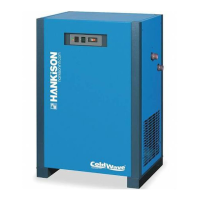



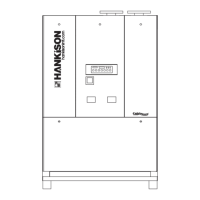


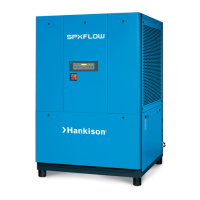
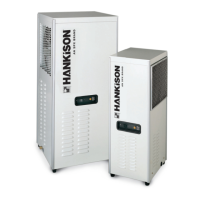
